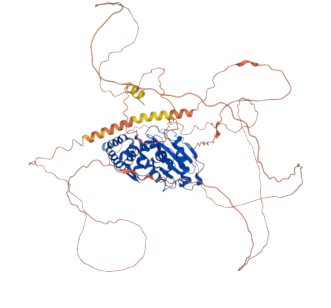Breakthrough in Chemistry: New Oxidation State for Praseodymium Discovered

In a significant advancement for the field of chemistry, researchers at the Georgia Institute of Technology have discovered a new oxidation state of the rare earth element praseodymium, achieving a +5 oxidation state for the first time. This groundbreaking finding, published in the esteemed journal *Nature Chemistry* on June 24, 2025, has implications for various applications ranging from electronics to quantum technology.
Rare earth elements (REEs), particularly lanthanides such as praseodymium, are renowned for their unique chemical properties, which have made them indispensable in modern technology. According to Dr. Henry "Pete" La Pierre, an associate professor in Georgia Tech's School of Chemistry and Biochemistry and corresponding author of the study, the discovery provides new insights into the chemical behavior of lanthanides, which are typically used in their +3 oxidation state.
"Discovering a new oxidation state is akin to discovering a new element," La Pierre stated. "Each oxidation state possesses distinct chemical and physical properties, and this new finding opens up possibilities for innovative applications."
Historically, the existence of a +5 oxidation state for lanthanides has been hypothesized since the 1890s, but it was deemed too unstable to be observed until now. The research team, which included experts from the University of Iowa and Washington State University, successfully stabilized praseodymium in this higher oxidation state, which could lead to new avenues in magnetic and optical technologies.
The implications of this discovery extend beyond theoretical chemistry. With the growing global demand for rare earth elements, particularly in technology sectors such as electronics, medical imaging, and defense, the ability to manipulate oxidation states could enhance the efficiency of mining and refining processes. The U.S. Department of Energy has indicated that the country faces a critical shortage of REEs, which are often difficult to extract and purify due to their similar physical and chemical properties.
As noted in a report by the U.S. Geological Survey (USGS) in 2023, domestic production of REEs has failed to meet increasing demand, leading to an over-reliance on imports. Dr. Andrew C. Boggiano, one of the co-authors of the study, emphasized that this discovery may help improve lanthanide separation processes, thereby reducing waste and increasing yield.
"The efficient separation of lanthanides is vital as they are often found together in ore deposits," Boggiano explained. "By utilizing oxidation chemistry, we hope to improve the extraction of these critical materials."
In addition to its practical applications, this research may also pave the way for new theoretical explorations in chemistry. Dr. Lisa Tran, a professor of chemistry at Stanford University, commented, "The ability to stabilize a higher oxidation state not only deepens our understanding of lanthanides but also encourages innovative thought in material science and chemistry."
Overall, the discovery of praseodymium's +5 oxidation state represents a pivotal moment in lanthanide research, with potential ramifications for various industries that rely on rare earth elements. As the demand for advanced technologies continues to rise, this breakthrough could lead to enhanced capabilities in the extraction, recycling, and application of these crucial materials, ultimately benefiting multiple sectors of the economy and advancing scientific knowledge.
This finding is part of ongoing research into the complexities and potential of lanthanides, which are already integral to numerous technological advancements. The team at Georgia Tech and their collaborators are committed to further exploring the chemical properties of these unique elements, aiming to unlock new possibilities for future innovations in material science and beyond.
Advertisement
Tags
Advertisement





